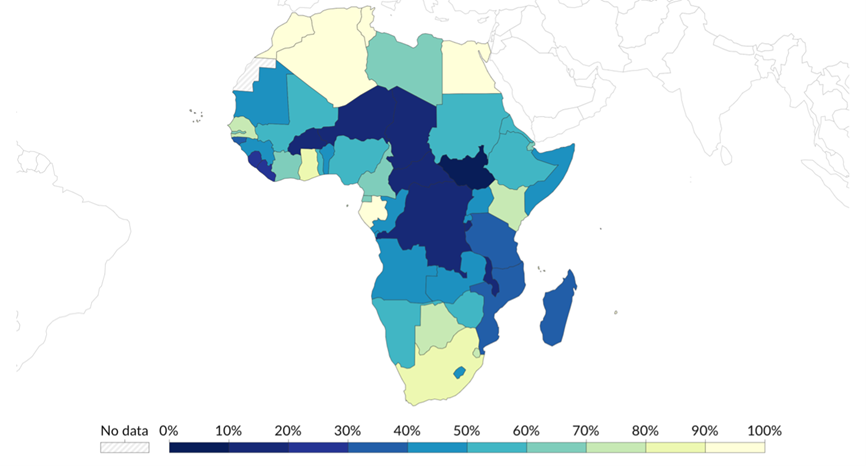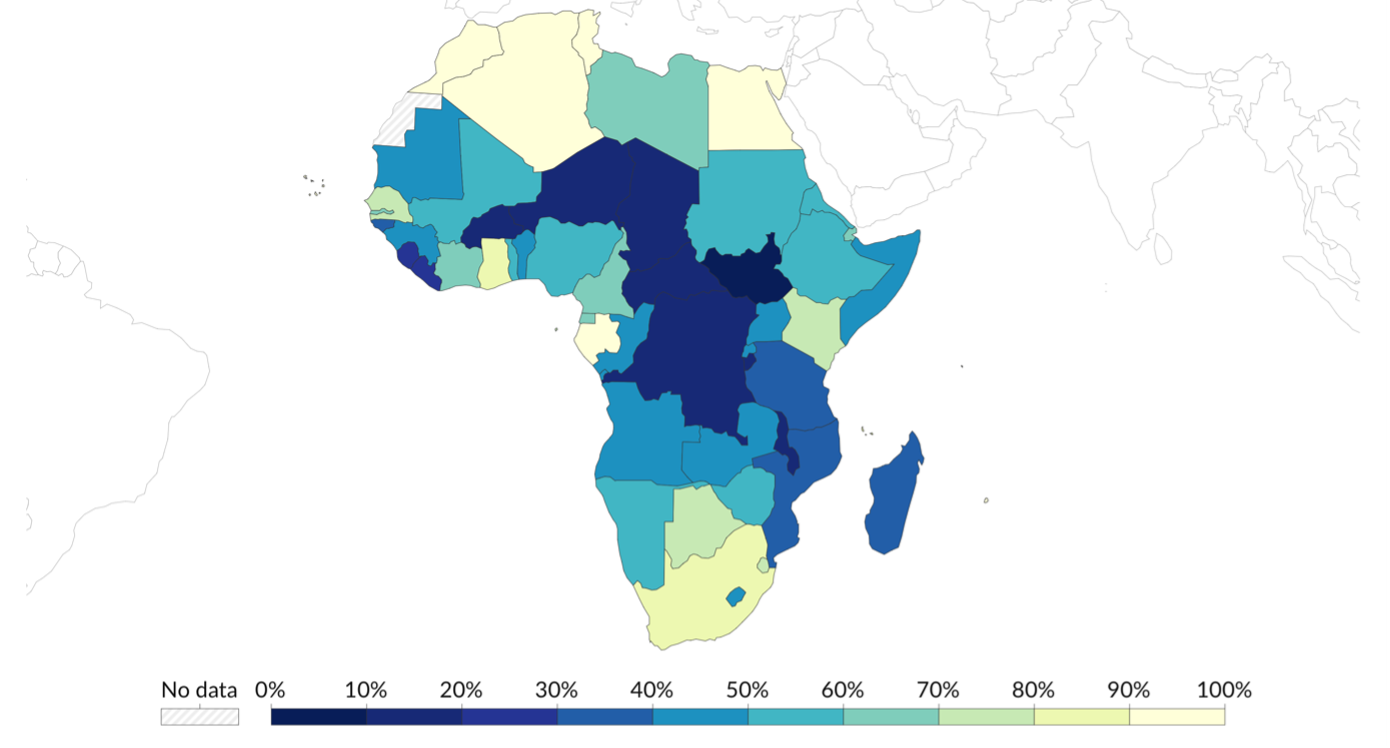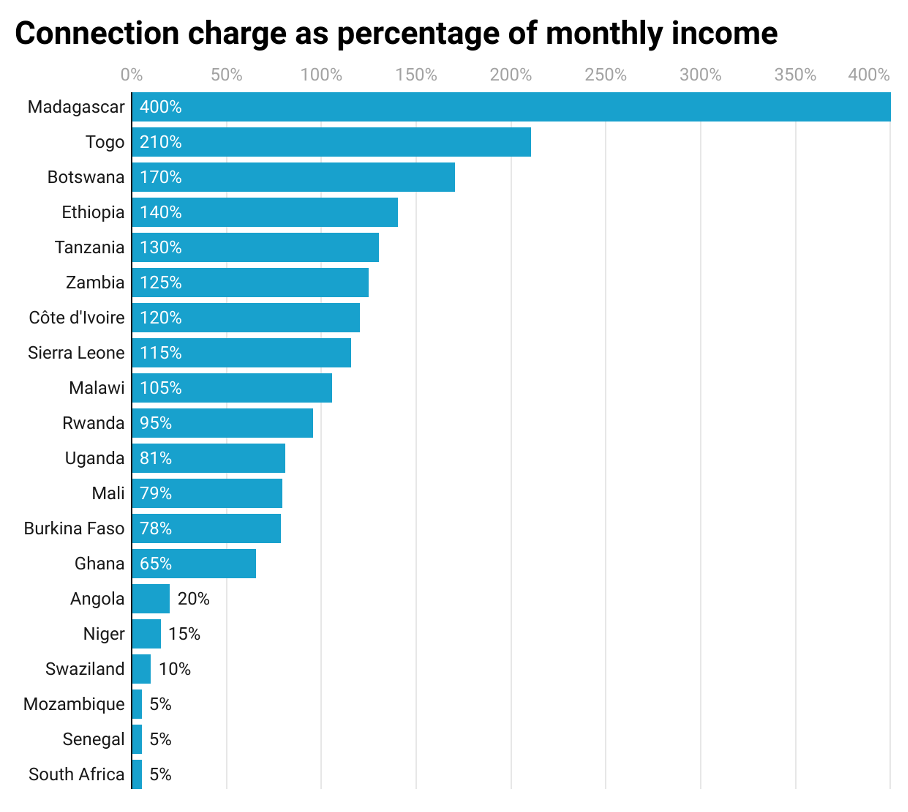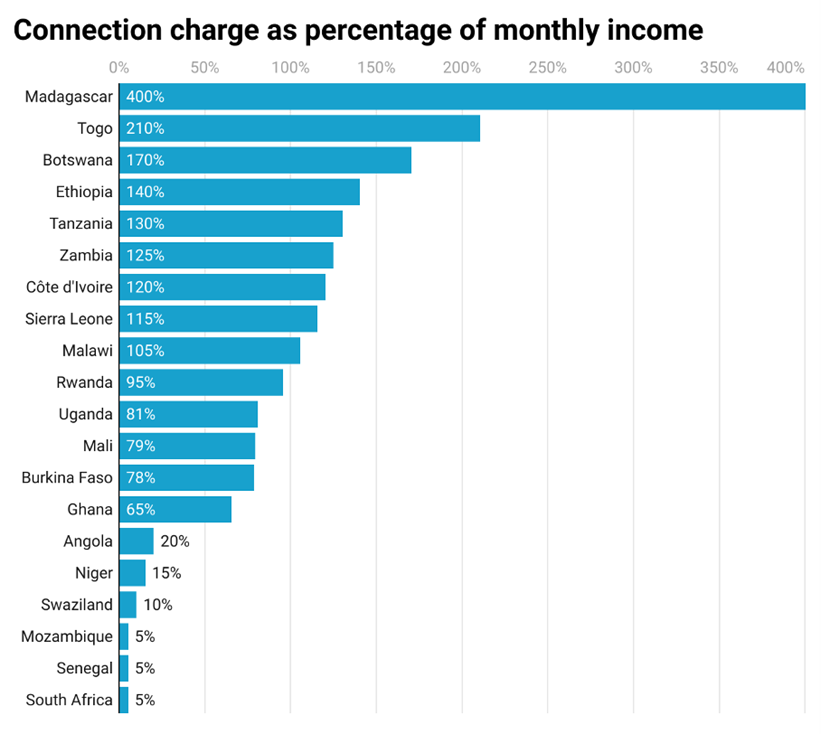Green African pathways towards continental electrification
The Sustainable Development Goal (SDG) of the United Nations sets a blueprint to achieve a better and more sustainable future for all to be achieved by 2030. One of these goals is to ensure universal access to affordable, reliable, and modern energy services and substantially increase the share of renewable energy in the global energy mix. While Africa is in prime position for zero carbon energy production, a bottleneck for full societal electrification is the electrical grid connection to cities and villages.
The challenge: achieving continental electricity access
Africa’s population is on the rise and with it, the demand for electricity as well. However, the current state of access to electricity still lies below 60% for the majority of African countries. Achieving 100% electricity access by 2030, even at low electricity levels, means connecting 60 million people to the grid yearly! The challenge is considerable, so what is the main issue?
Share of population in African countries with access to electricity in 2020 (World Bank)


The electrification challenge for Africa is hindered mostly not by production bottlenecks but cost. On the supplier’s side, there is mismatch between the cost of providing energy and low revenues for delivering said energy. Utilities often suffer shortages and power outages, leading to customer dissatisfaction and refusal to pay bills. This becomes a negative spiral where the supplier struggles further to provide the service, leading to an even worse costumer experience.
In many countries, customers face significant obstacles related to the cost of electricity, where the cost often far exceeds their monthly income, as illustrated in the figure below. Additionally, the expense of connecting to the electrical grid is frequently too high for customers to afford. Even when connection points are nearby and available, African villages may decline this option primarily due to financial constraints. For instance, in a country like Madagascar, the charge for connecting to the grid can be as much as 400% of the average monthly income.


Monthly bill and connection charge in terms of monthly income percentage for African countries (Figure by Econopolis Strategy, data by Kojima et al. 2016)
Possible solutions
How can we address this challenge? Morocco has successfully achieved grid-connection, and there are lessons to be learned from their “least-cost” approach. This approach uses geospatial data like population density, growth rate, projected electricity demand, etc. to map the least expensive pathway to achieve full electrification per country. Using this tool, government and power sector actors get insights on electrification objectives and optimize the process. There are three main possibilities. When the installed capacity needs to reach a minimum of 800 W or higher, a grid connection will be necessary. Between 50 and 800 MW, mini-grids become interesting while SHS (Solar Home Systems) can be used for capacities up to 200 MW. The first is a set of small-scale electricity generators interconnected to a distribution network that can supply energy to a small group of costumers, the latter is a small-scale, autonomous electricity supply for households. By determining the minimal needed effort to provide sufficient energy for a given region, the costs can be kept to a minimum. But even if these are the lowest cost solutions, efforts still need to be made to increase the affordability to truly capitalize on the least cost approach.
If the least-cost approach forces a region to use a grid connection, it will be important to further reduce the costs, since we already saw this is the most expensive option. Here it can be interesting to look at the African Industry. The electrification of the mining industry for example is at full blast. Since this is an important industry for a lot of African countries, connecting the energy demand for the mining sector and general energy demand in nearby cities and villages would provide a huge cost reduction. Other opportunities like interlinking the energy grid across the whole continent enables the complementarity of renewable energy sources, improving the stability of the energy supply. Under- and overperformance in energy production of different countries can therefore soften energy cost swings.
Mini-grids as least-cost option will mainly be used in peri-urban areas with moderate subsidies needed for supplier and costumers. SHS can then be placed in remote rural areas which are consequently in need of high subsidies. To lighten the burden of subsidies on African governments, PPPs have been successfully used to finance energy. The increase of mobile phones in the continent has had a pivotal role in the development of mini-grids and SHS markets in the last five years. By leveraginge mobile payments, energy can be financed as a service. Phone companies provide a Pay As You Go (PAYG) plan enabling storage and energy as a service. This way, the customer can rent batteries, solar panels and home appliances for a small fee. In turn, the provider companies acquire mobile networks that enable direct communication with costumers, remote operation and maintenance devices and the option to disable functionality for defaulting costumers.
As Africa continues to connect its citizens to the grid, they will likely make use of their incredible potential for renewable energy - which in time could give insights into optimizing green energy grids.